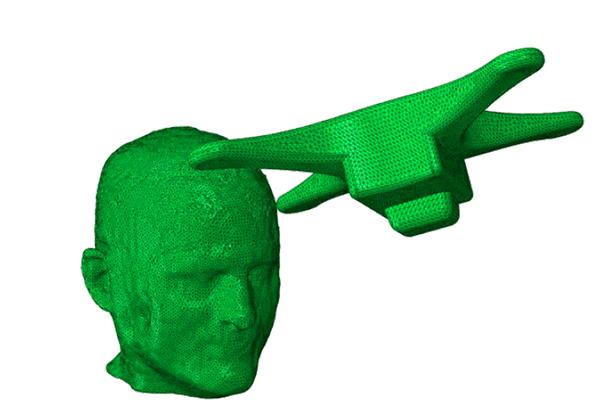FAA Report Examines Drone-Human Impact

WASHINGTON—Among the findings in a drone-safety study commissioned by the Federal Aviation Administration is that getting hit by an errant drone is not like getting thwacked by a rock. The comparison was made in a PowerPoint presentation summarizing the report, “FAA UAS Center of Excellence Task A4: UAS Ground Collision Severity Evaluation.”
“Collision dynamics of [small unmanned aerial systems] is not the same as being hit by a rock,” the presentation said, enumerating the rationale: “Multi-rotor UAS fall slower than metal debris of the same mass due to higher drag on the drone. UAS are flexible during collision and retain significant energy during impact. Wood and metal debris do not deform and transfer most of their energy.”
While the PowerPoint boiled the subject matter down quite a bit, the study itself was an extensive look at what a falling or errant drone can do to the human body, with the most likely injuries due to blunt force trauma, lacerations and “penetration injuries.” The reason for the study is so the FAA can define safety parameters for flying drones over people out in the open. Doing so now requires a waiver from the agency.
“The kinetic energy for the worst case terminal velocity or maximum cruise airspeed, energy density, and rotor diameter are the most significant UAS characteristics contributing to blunt force trauma, penetration and laceration injuries, respectively,” the report states in the Executive Summary.
The 195-page report breaks out rotor- and fixed-wing unmanned aircraft as well as how drones are being used and what type of injuries are most likely to occur with a particular usage type, including fatalities. The study calculates the “probability of fatality,” or POF, based on the size, type, load, weight and velocity of the drones and how and where it hits the human body. Bigger and faster generally means deadlier.
Last August, the Obama Administration directed the FAA to have a proposal for drone flights over people out for comment by winter. (See “FAA to Propose Drone Flight Over People Rule by Winter,” Aug. 3, 2016.) While the docket is not yet available, a proposal was submitted to the White House Office of Information and Regulatory Affairs in November, according to Hogan and Lovells.
Defining rules for integrating drones into the National Air Space, particularly as it relates to public safety, has been a complicated endeavor for the FAA. Rules allowing commercial drone applications went into effect last summer with limitations on flight over people who are not part of the drone crew. The FAA first cut drones loose for newsgathering in March of 2015 with a temporary blanket waiver for operations at or below 200 feet, with proscriptions pertaining to people and restricted airspace.
The study, according to the FAA, was delivered for peer review in late April to experts at NASA, the Department of Defense and the FAA. The research comprised “300 publications from the automotive industry and consumer battery market, as well as toy standards and the Association for Unmanned Vehicle Systems International database,” reviewed by “the University of Alabama-Huntsville; Embry-Riddle Aeronautical University; Mississippi State University; and the University of Kansas, through the Alliance for System Safety of UAS through Research Excellence,” or, “ASSURE,” which “represents 23 of the world’s leading research institutions and 100 leading industry and government partners.”
Research commenced in September of 2015 and covered drone-human collision data. A second phase of the study will commence in June and “examine the risks of collisions with aircraft.”
The professional video industry's #1 source for news, trends and product and tech information. Sign up below.
